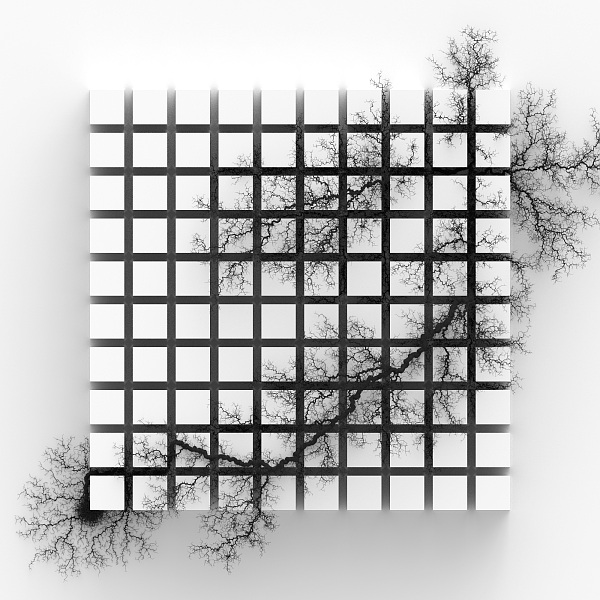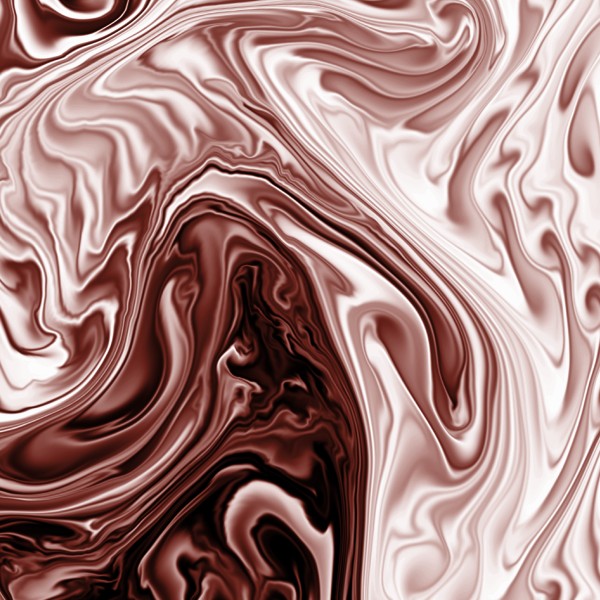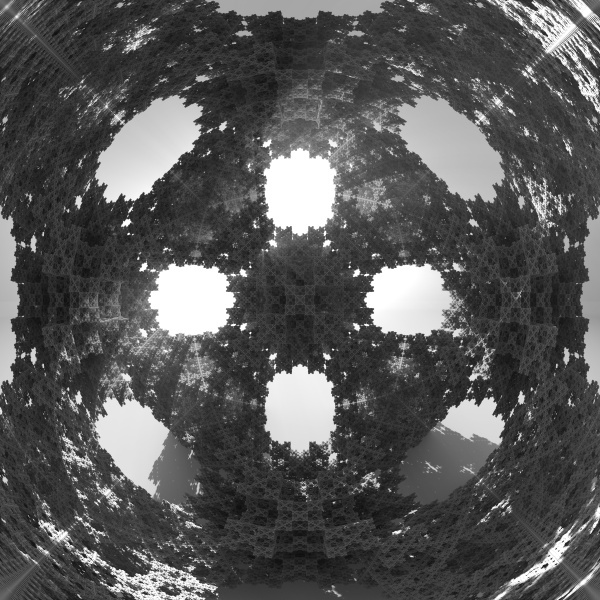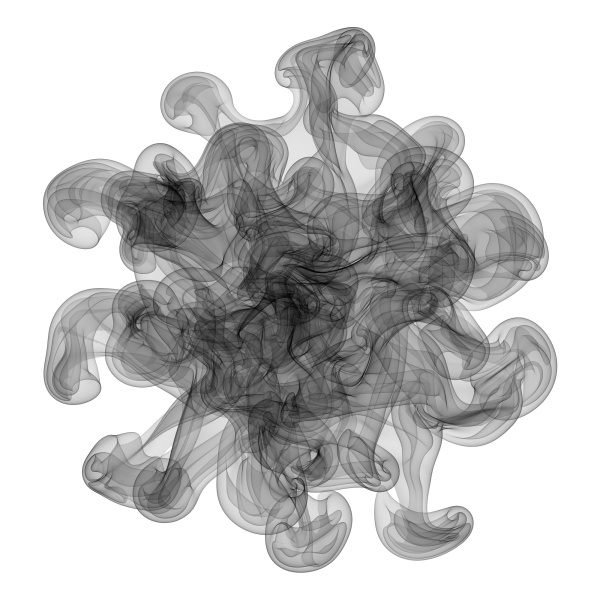Mark J. Stock |
"Sprawl"
Digital C-print, 24"x24" print, 30"x30" frame,2009.

"Sprawl" detail

"Sprawl" aims to illustrate the similarities and differences of two
forms of growth: planned and adaptive. A simulation of
locally-constrained diffusion limited aggregation (DLA) "grew" the
plant-like geometry that wraps around and over the regular, rectangular
landscape. Within this particular DLA, the particles were allowed to
diffuse through space freely, but they would not "stick" to the existing
structure if they were inside the regular geometry. Because of the very
large amount of detail, the rendering used a parallel projection, which
allows the piece to be explored from very close as a collection of small
vistas.
"Midnight in the Bathtub of Good and Evil"
Digital C-print, 24"x24" print, 30"x30" frame, 2007.

"Midnight in the Bathtub of Good and Evil" detail

"Midnight..." is an image from a high-resolution vortex-based
Lagrangian-Eulerian fluid simulation. Each computational step involves
examining---for each pixel---the surrounding pixels, comparing those
states with the previous states, and projecting forward with a
prediction of where the conserved quantities will travel. A battle is a
natural analog, as each actor in this computation behaves according to
its own strengths, and under the distance-decaying influence of its
neighbors. The numerical limit of convective instability is locally
exceeded, causing chaos in the spatial pattern of "good" and "evil" fluids.
"Sunset On Squares"
Digital C-print, 24"x24" print, 30"x30" frame, 2004.

"Sunset On Squares" detail

"Sunset On Squares" is a digital image of a seven-level refinement of a
Vicsek-like fractal and contains 105 million unique cubes. This angular
fisheye view from the center of the object reveals not only square
geometry, but circles, triangles, hexagons, and other surprising
symmetries. An accurate light interreflection simulation (particle-based
pseudo-radiosity) during the rendering stage elevates the geometry above
the virtual.
"Droplet #7"
Digital C-print,24"x24" print, 30"x30" frame, 2004.

"Droplet #7" detail

"Droplet #7" is an x-ray of the surface of a spherical Rayleigh-Tayor
instability (in which an interface between fluids of different densities
subjected to an acceleration) in the Boussinesq limit (small density
difference). A regularized remeshed vortex sheet method computed the
evolution of the surface. Rayleigh-Taylor instabilities appear at a
variety of scales in nature and physics, from localized atmospheric
convection to high-energy laser research to supernovae dynamics.
Mark J. Stock, Research scientist and independent artist, Applied Scientific Research, Inc.
"All of my work depicts imaginary scenes that derive their complexity
from the deceptively simple behavior of large numbers of independent
actors/agents/particles/elements. The rules governing the action of each
element are often based on primary natural and physical forces and can
be described in a single mathematical statement or a few lines of code.
Alone, each element emits a trivial and boring solution, like a single
star floating motionless in space. Together, though, these elements
create massively-complex galaxies of shapes and forms inspired by, and
reflecting, the natural origin of their rules. As a scientist and an
artist, I create computational tools to simulate physical and natural
phenomena. I strive to use these tools to reveal the beauty inherent in
nature and the mechanisms that both nature and computational science use
to create those wonderful patterns."